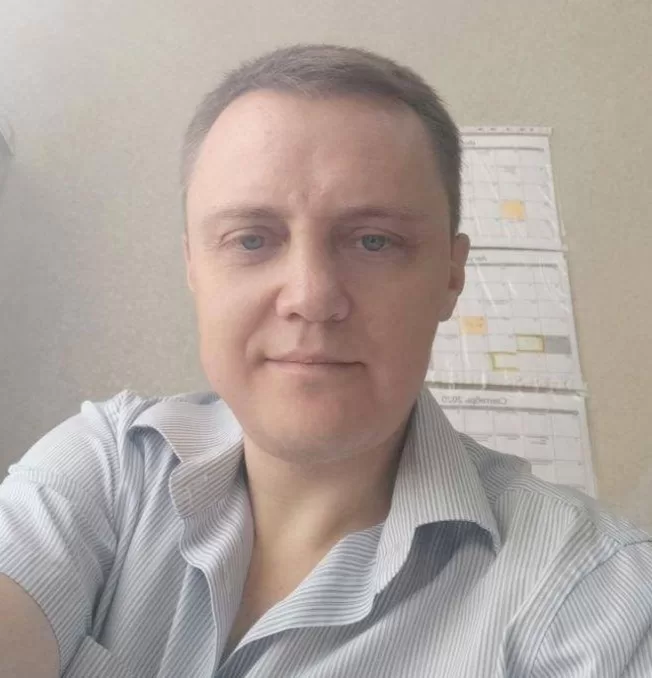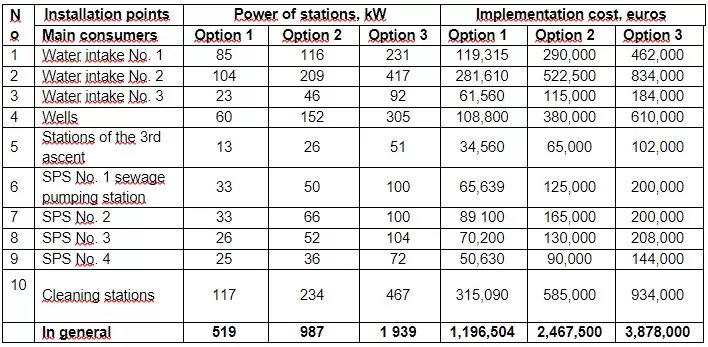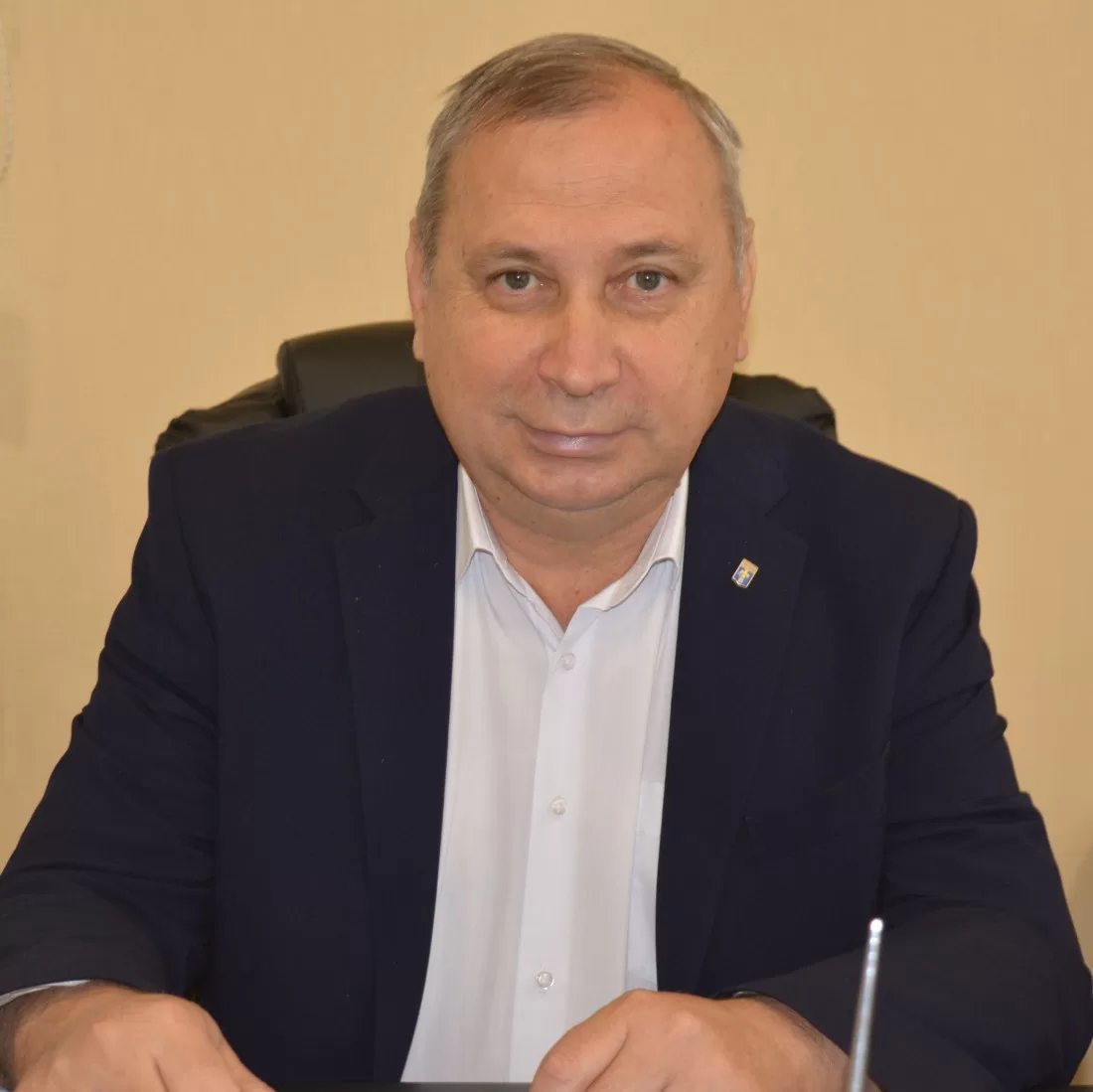From the first days of the full-scale russian invasion, Myrhorod community in Poltava oblast suffered from enemy shelling, which has been destroying infrastructure. During the outages, generators partially helped, but their power was insufficient to meet all needs.
Myrhorod municipality began to develop renewable energy to protect residents from critical situations. In an interview with Serhii Solomakha, Head of the Myrhorod municipality, and Vitalii Logvin, Head of the Department of Municipal Initiatives, Investments, and Energy Management, we will tell you what the municipality has already done for its energy security.

– Mr. Vitalii, what does the development of renewable energy sources and energy independence mean for your municipality?
Energy independence in wartime is about the safety of the community. Myrhorod often suffers from shelling, so backup power is needed in the face of emergency power outages. We understand the value of the environment, so we are working on developing renewable energy sources. Myrhorod is also a resort community, so it is important for us to preserve nature.
– How did the community’s critical infrastructure work last heating season? Have you suffered from power outages?
We suffered, like every community in Ukraine. There was no electricity or communication, generators were working in all boiler houses. Water utilities also received power from them, but the situation was difficult, so they could not provide all the needs.
– Has the municipality developed documents defining strategic energy development and adaptation to climate change?
Myrhorod is a signatory to the European Commission’s Covenant of Mayors initiative. The community has developed and approved the Sustainable Energy and Climate Action Plan (SECAP) until 2030. We participate in the European Energy Award, a system for evaluating actions taken by the community towards the development of sustainable energy and climate protection.
For reference: The European Energy Award (EEA) is a quality management and certification system for municipalities and regions. It assists local authorities in implementing interdisciplinary planning approaches and energy and climate policy measures. The European Commission has officially recognized the EEA as an effective tool for implementing Action Plans for Sustainable Energy and Climate under the Covenant of Mayors.
We also have an approved Strategy for Sustainable Development of the Myrhorod Subregion until 2028. The document will contribute to the effective development of the community, the rational use of resources, the creation of comfortable living conditions for the population, and the improvement of environmental safety (cleaning of water bodies, optimization of waste management, and improvement of treatment facilities). We plan to achieve this through cooperation with the community and business.
We are working on the development of the Development Strategy of the Myrhorod City Territorial Community until 2030. We plan to approve it by February. The strategic document will be essential for identifying priorities that will improve the population’s lives and ensure sustainable socio-economic development.
– With the support of Ecoclub, the Myrhorod community has developed a feasibility study for installing a solar power plant (SPP) to operate water supply and sewerage systems. What was the need?
We started thinking about it with the beginning of a full-scale war. During the shelling, there were problems with the power supply at the sewage treatment plant. If the sewage treatment plants do not work, sewage will fall into the river. This can lead to an environmental and humanitarian disaster.
Water supply in the community will not work without powering sewage pumping stations and sewage treatment facilities. Therefore, providing the facility with a backup power source is crucial. A solar station paired with a battery will allow wastewater treatment plants to operate under any conditions.
– What needs will the SPP cover? Why is it important for the work of the water utility?
In the feasibility study, a document that calculates the feasibility of installing the station, three possible options for the capacity of the future SPP were considered. The most optimal option for safety and energy consumption is option No. 2.
The SPP for the water supply and sewerage system, with a capacity of 978 kW, will cover 57% of the annual electricity needs of the water utility.

The solar power plant operation will provide the community with water even during power outages and prevent the shutdown of treatment facilities.

– Mr. Serhiy, tell us about the community’s experience in energy efficiency and renewable energy sources. What projects have you managed to implement?
Our municipality has been working on improving energy efficiency since 2008. Of all, thermal modernization projects have been implemented the most.
We implemented an energy management system in the community with the help of Deutsche Gesellschaft für Internationale Zusammenarbeit (GIZ). This help to establish constant monitoring of energy consumption, analyze energy costs, and consume energy resources more efficiently. The first joint project on thermal modernization of the preschool institution was implemented in 2012 with the United States Agency for International Development (USAID).
The heat supply sector in the community was optimized: individual heating points (IHS) were installed for houses in two micro districts, two biomass boiler houses were launched: a straw boiler house in 2016, a wood chip boiler house at the end of 2022, and heating networks were replaced.
This saves budget funds and energy resources, so we need to move towards this.
– What renewable energy and energy efficiency projects does the municipality plan to implement?
The planned solar power plants for critical infrastructure will be piloted for our community. The war continues, so the safety of citizens remains an urgent issue.
At the same time, we see that solar power plants are economically beneficial for enterprises so that we will develop this area. We want to attract co-financing and work with partners on developing renewable energy.
Photo: Kindergarten in Myrhorod. Suspilne Poltava











